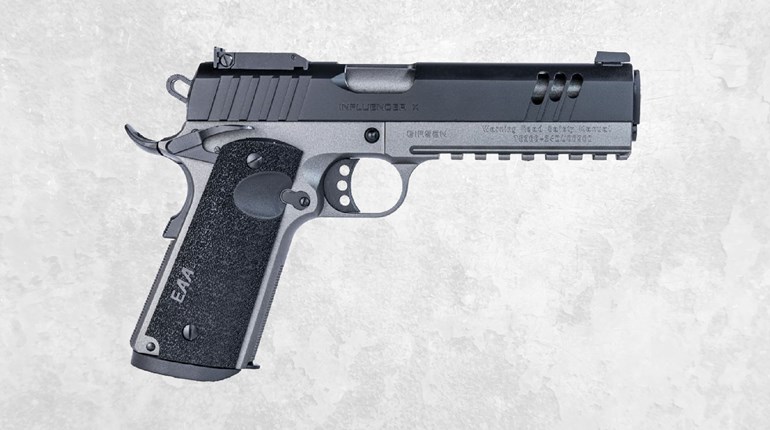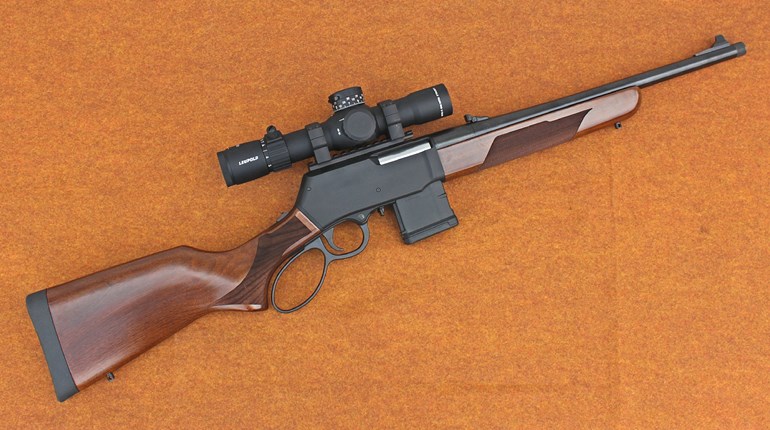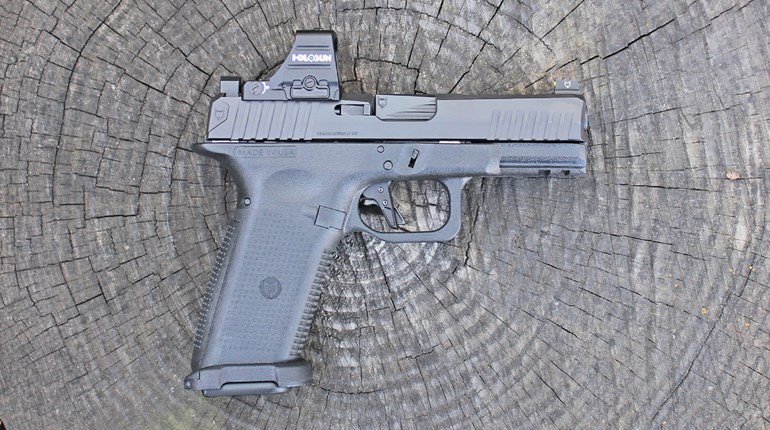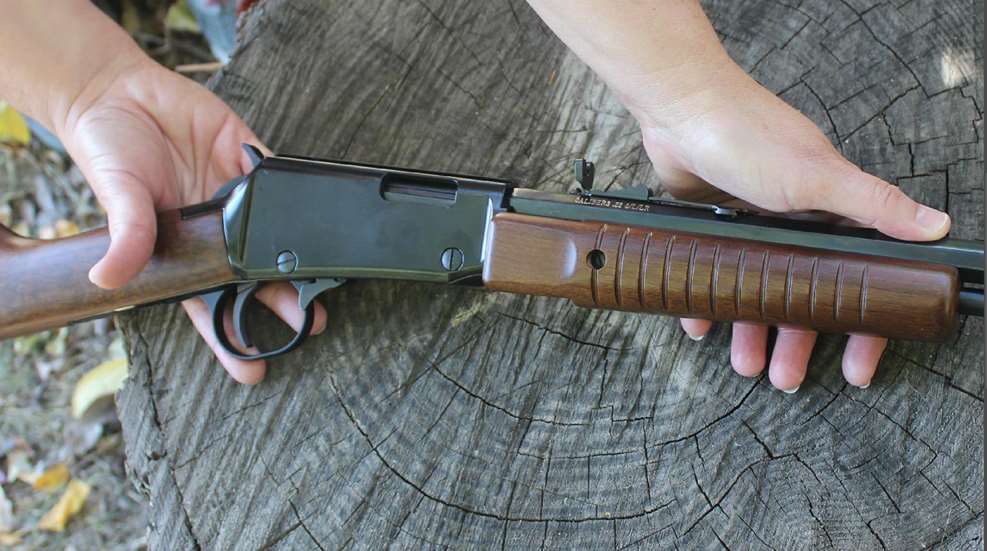
This year marks the 25th anniversary of Henry Repeating Arms offering shooting sports enthusiasts top-notch rifles, shotguns and pistols. The company's line-up of lever-actions is extensive, including several configurations of the H001 .22-caliber rimfire, the tacti-cool centerfire X-Models and the box magazine fed Long Ranger hunting rifle. However, Henry's product line-up is not limited to lever guns. The company offers their own take on the AR-7 semi-automatic survival rifle, sleek break-action single shots and the polymer stocked Mini Bolt Youth models. But there's one slick rimfire model in Henry's catalog that deserves more attention than it usually receives. It's the company's octagonal-barrel pump-action, which is a real sweetheart to shoot. Here are a few reasons why it deserves a closer look from .22 LR enthusiasts.
Pump-Action Familiarity
Pump-action rifles and shotguns call for a different management style than other manually operated action types. When using bolt-actions or lever-actions, the support hand remains in steady contact with the fore-end to keep the stock pressed into the pocket of the shooter's shoulder. The shooting hand then releases the rifle's grip to cycle the bolt or to work the lever and is then returned to a shooting grip to fire the gun. With a pump action, it’s the shooting hand that remains firmly in place, in a shooting grip, while holding the stock against the shoulder. The support hand is used to cycle, or “pump,” the action by moving the fore-end back and forth to eject the spent cartridge case, chamber a fresh round and cock the hammer.

A pump-action rifle is also called a slide action, or in the 19th century, a trombone action. (image: Max Jacobsen/@pnw_pew)
Some will argue that bolt-actions and lever-actions are inherently more accurate that pump-actions because the support hand maintains a fixed position. Other folks have demonstrated that pumps hit what they are pointed at when the people running them are familiar with the platform. It boils down to personal preferences and familiarity with the platform. If you already shoot a centerfire pump-action shotgun or rifle, then moving over to a pump-action rimfire will feel more familiar than a lever-action.
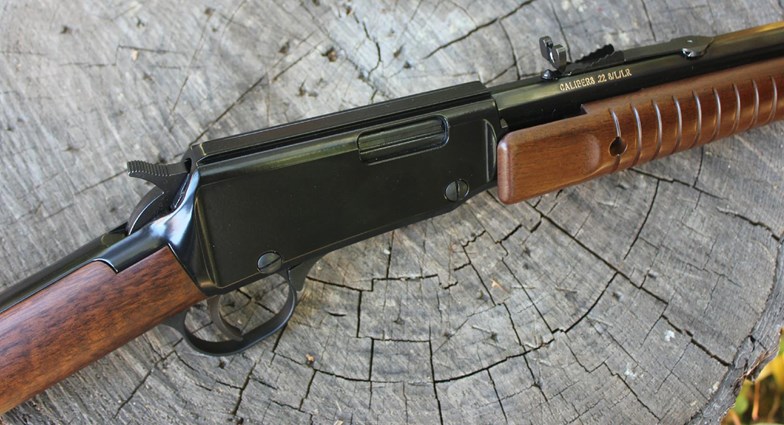
The aluminum receiver is nearly identical to that of the Henry H001 lever-action models.
That being said, the pump attached to this Henry .22 is quite different from that of a 12-gauge shotgun in a few good ways. The fore-end rests much closer to the receiver. In fact, it overlaps it just a bit which means that folks with more compact statures don't need to stretch like they're reaching for a can on a high shelf. This pump is much easier to work than that of a shotgun. The distance the fore-end travels is only 1.5" in each direction. The average 12-gauge fore-end travels around 4" both ways depending on the model. And Henry's pump requires less pressure to move. The result is a quick, easy cycle with follow-up shot speeds that can come close to rivaling a semi-automatic rifle with practice.
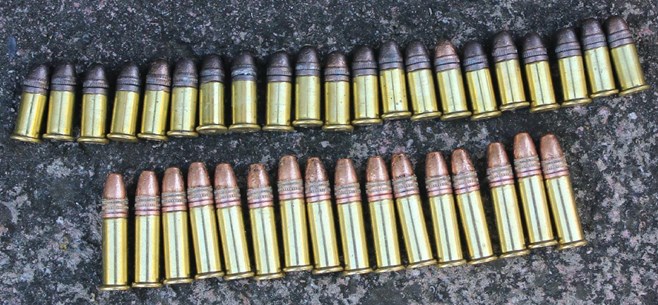
The tubular magazine can hold up to 16 rounds of .22 LR (Bottom Row) or 21 rounds of the more compact .22 Short.
Ammunition Flexibility
If you take a look at this model, it has the same stamp on the barrel as Henry's H001 lever-actions: Caliber .22 S/L/LR. This means the rifle can shoot .22 Short and .22 Long rimfire cartridges in addition to the more familiar .22 Long Rifle (.22 LR). The primary difference between these three cartridges is case length with the .22 Short being the most compact and the .22 LR having the longest case of the group. As far as I can tell, the mid-size .22 Long cartridge has all but faded out of production and is currently about as easy to find as an honest politician. But you can still find .22 Short rounds which are usually topped with lighter 29-grain bullets loaded to sub-sonic velocities. Shorts produce a softer report and next to no recoil which makes it an ideal cartridge for casual plinking and pest control. It's also a handy feature that this particular rifle's magazine will hold up to 21 rounds of .22 Short or 16 rounds of .22 LR.
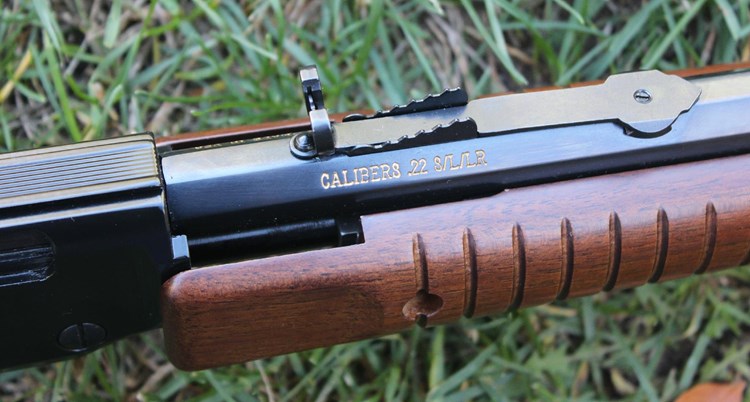
This is a three-caliber rifle capable of firing .22 Short, .22 Long or .22 Long Rifle cartridges.
Like bolt-actions and lever-actions, this pump action does not suffer from the ammunition sensitivities that can show up with some .22 LR semi-automatic rifles. As we discussed in this post, .22 LR ammunition operates at a variety of bullet velocities and weights that can change how much pressure the cartridge produces. Semi-automatics rely on the cartridge pressure to cycle the bolt but manually-operated actions, like a pump action, do not. This means that where the bullet strikes the target (point of impact) and accuracy will shift when changing loads but the action will continue to operate smoothly. For those who prefer a pump with a bit more pep, this gun is also available chambered in .22 Mag.
Henry Craftsmanship
Henry is dedicated to producing high-quality rifles using a U.S. based work force. I've worked with several Henry models over the years and they have all arrived with proper fit and finish throughout. American craftsmanship and materials mean this rifle costs more than some options. It sports a suggested retail price of $636 which translates into real-world prices around $40 less. But working with a well-made gun like this one is a treat for the eyes as well as the hands. This rifle is fitted with a 20" octagonal barrel made of nicely polished blued steel. The sights are a classic adjustable buckhorn configuration with a brass bead up front and a white diamond at the rear.
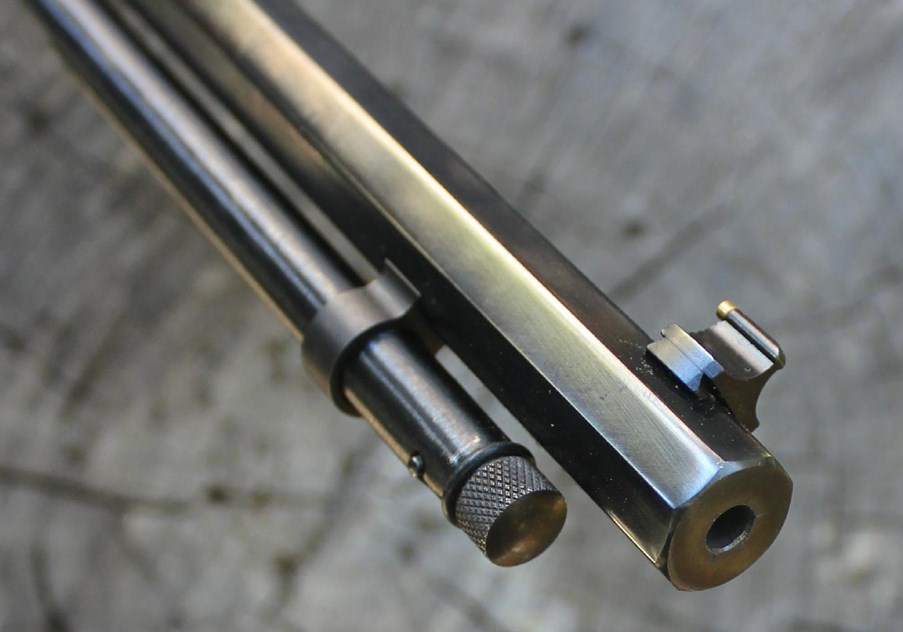
The nicely polished octagonal barrel is fitted with a dovetailed brass bead front sight.
The sliding fore-end and shoulder stock are made of American walnut with a clear matte finish that allows you to enjoy the wood grain. The light weight receiver is made of aluminum, coated to match the finish of the steel components and topped with an unobtrusive 3/8" optics rail for those who which to use a rifle scope. Like Henry's lever guns, the pump's action and controls were nice and smooth right out of the box. The single-action trigger broke cleanly with 2 lbs. 3 oz. of trigger pull with just a hint of travel after the break.
Enjoyable to Use
Among my earliest recollections of shooting .22 rifles with my family was a day trip with cousins that included a chance to try my uncle's old Remington Model 12. It was such a great fit for me at that time. The pump action design is ambidextrous, reliable and intuitive to use making it well suited to a variety of skill levels. This is why pump-action shotguns continue to thrive. And for those who want to shoot fast once in a while, a pump action .22 can be surprisingly quick, especially for those who live in jurisdictions that make it difficult or impossible to own a semi-automatic rifle.
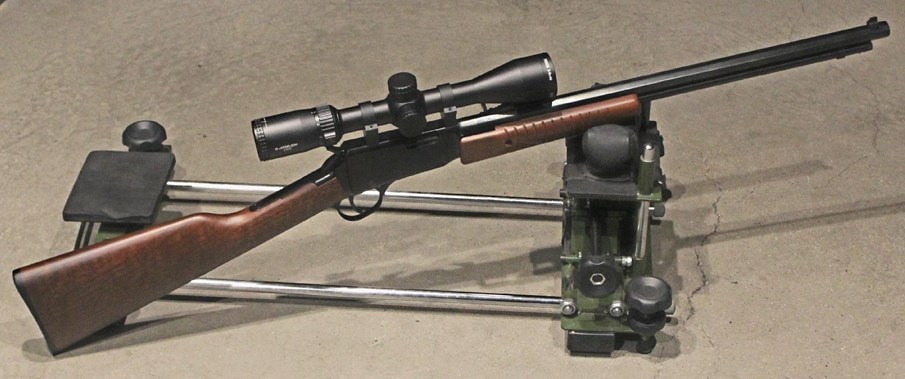
For formal bench-rested accuracy testing the rifle was fitted with a magnified Athlon scope.
The Henry pump-action was evaluated over multiple trips to the shooting range. This was simply because I wanted to keep shooting it! The rifle worked its way through hundreds of rounds consisting of bulk-box, target grade and hollow point loads without any ammunition related issues. All of the controls and features operated properly as well. The one and only hiccup the rifle experienced early on in the course of testing was caused by yours truly. It was a user-induced malfunction known as short-stroking the pump, meaning, a jam that's caused by not pulling the fore-end all the way back before pressing it forward again. Once the action was cleared of the round I jammed in it, the rifle operated flawlessly.
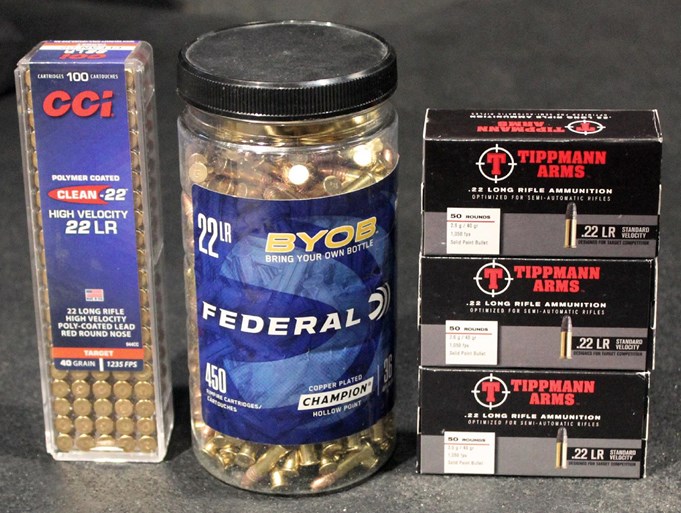
Test ammunition included bulk, target-grade and hollowpoint loads.
When it was time to set the rifle into a bench rest for formal 5-shot accuracy testing at 50 yards, the rifle was outfitted with an Athlon Optics Neos 3-9x40 BDC 22 Rimfire Reticle scope using a top notch set of Warne Maxima 1" High 7.3/22 Quick Detach rings for 3/8" (11 mm or .375") scope mounts. The ammunition used included CCI Clean-22 target, Federal Champion general-purpose and Tippmann Arms standard velocity loads. The following table shows the range results.
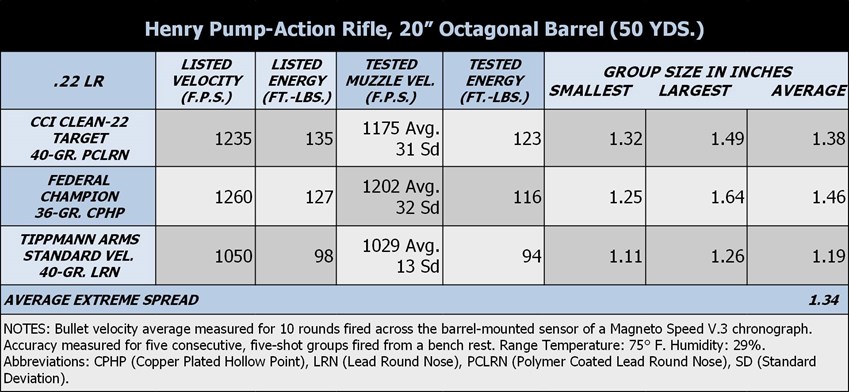
Parting Shots
When evaluating rimfire rifles, I believe the fun factor is as important as reliable function. Yes, .22s have a good deal of utility going for them. They make great small game hunting guns and the ammunition is affordably priced. But plinking away at empty soup cans, reactive targets and busting up dirt clods on the berms is often a family affair that everyone should be able to enjoy. Pump-action .22s are not everyone's cup of tea but they are easy to use and enjoyable to shoot. If you are looking for a pump gun, be it for nostalgia or its quick, intuitive action, Henry offers a well-made adult-size option. For more information, visit henryusa.com.
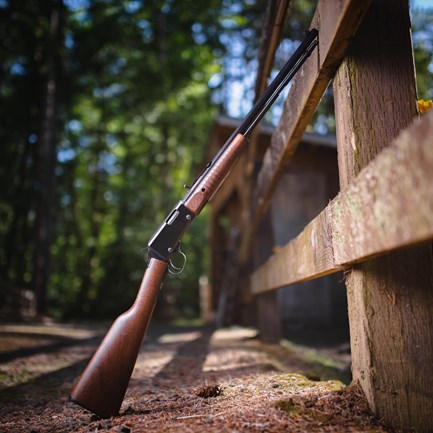
(image: Max Jacobsen/@pnw_pew)












